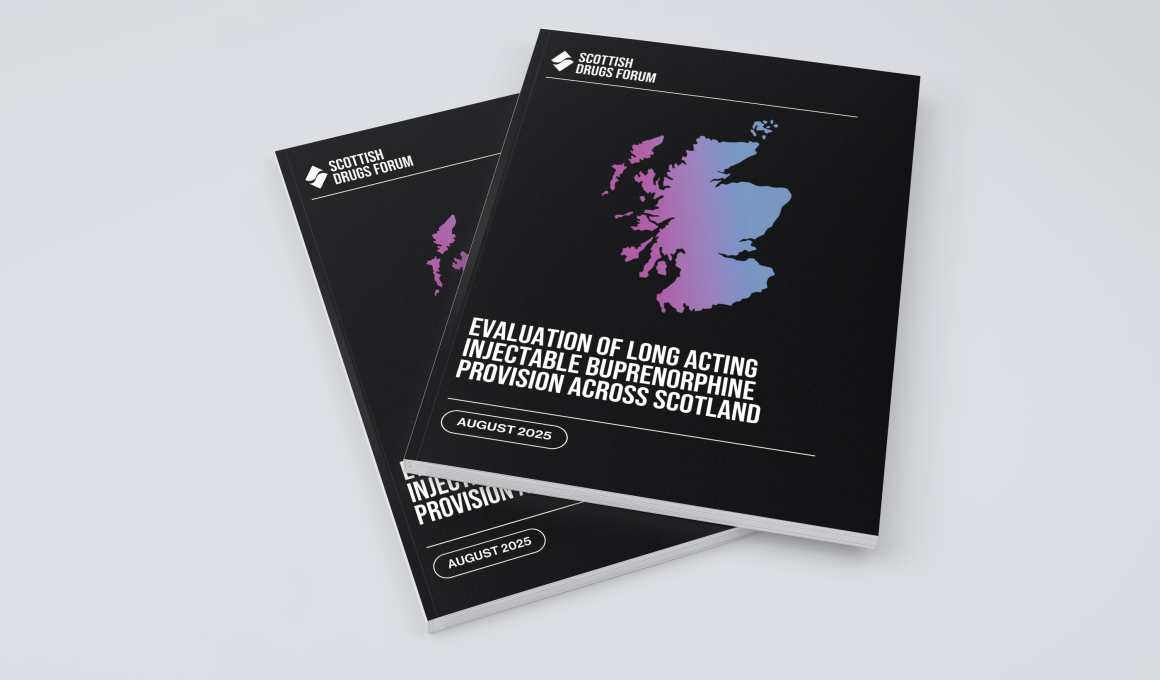Building on the important work from last year’s observational evaluation of Medication Assisted Treatment (MAT), Scottish Drugs Forum has published a new peer-led research report focusing specifically on long-acting injectable buprenorphine (LAIB). This more targeted evaluation explores the lived experiences of people receiving LAIB treatment in greater depth, offering fresh insights into this form of treatment.
The findings highlight both the strengths and challenges of LAIB and wider MAT provision in Scotland. The report reinforces that these interventions are an essential part of reducing harms from opiate use and can be central to people’s recovery journeys. However, to reach their full potential in supporting people, they must come with the necessary wraparound support.
Following on from last years report, themes centred around access, choice and support with further themes emerging around substance use on top of LAIB and attitudes and impacts of LAIB. In contrast to last year, this evaluation also included the views of staff in addition to people in LAIB treatment within community and prison settings.
Katy MacLeod, Research and Peer Engagement Programme Manager at SDF, said:
“Many people in treatment and staff highlighted the autonomy and flexibility that LAIB could provide in treatment. It was clear that LAIB could be both lifesaving and life changing but there was an evident need to further improve access, choice and support for LAIB. An all too familiar gap of mental health care emerged as an area needing urgent attention, partly due to a need to better equip some people for the psychological adjustment that may be needed on medication that can give greater mental clarity and associated reconnection with one’s emotions. It is important that we set people up to succeed in treatment, ensuring they can experience the many benefits of greater mental clarity without suffering due to a lack of support or preparatory work for what they should expect. Information provision in accessible formats was another key gap discussed. Offering a wider range of information resources which support informed decision making and which come supported by informed and trained staff was key. Co-produced information and the chance to receive peer education and support from those with lived and living experience of LAIB were identified as essential elements of improving people’s experiences within LAIB treatment. I’d like to thank our team of peer researchers supported by the lead researcher for this project Louise Horn for their dedication in producing such a worthwhile report which we hope can offer practical recommendations to improve treatment and support for those accessing LAIB.”
Peer researchers Nicki and Jaqui involved in the evaluation shared their experiences of undertaking this work:
Nicki said:
“For me, the main message I got was that the people who were doing well on LAIB had a good relationship with their keyworkers, had a good level of trust with them and were being offered different types of supports to help their life to move forward. That is what you want to see.”
Jacqui added:
“Listen to people in treatment and hear what they are saying if they are not happy or uncomfortable with what is going on for them. It’s that relationship stuff again that can make a difference to how people feel about themselves and their treatment.”
Louise Horn, Development Officer and lead researcher on the evaluation, said:
“This evaluation highlights the continued importance of person-centred care. The theme of substance use alongside LAIB highlighted a need for strengthened harm reduction support, with participants expressing a clear desire for tools such as safer inhalation pipes to promote safer substance use if made available. I would like to thank the participants for sharing their experiences so openly, and the peer research team for conducting the interviews with such care and sensitivity. These contributions have been invaluable in shaping the insights and recommendations presented in this evaluation.”
The Full Report and Executive Summary is now available to read and download on the SDF website.

